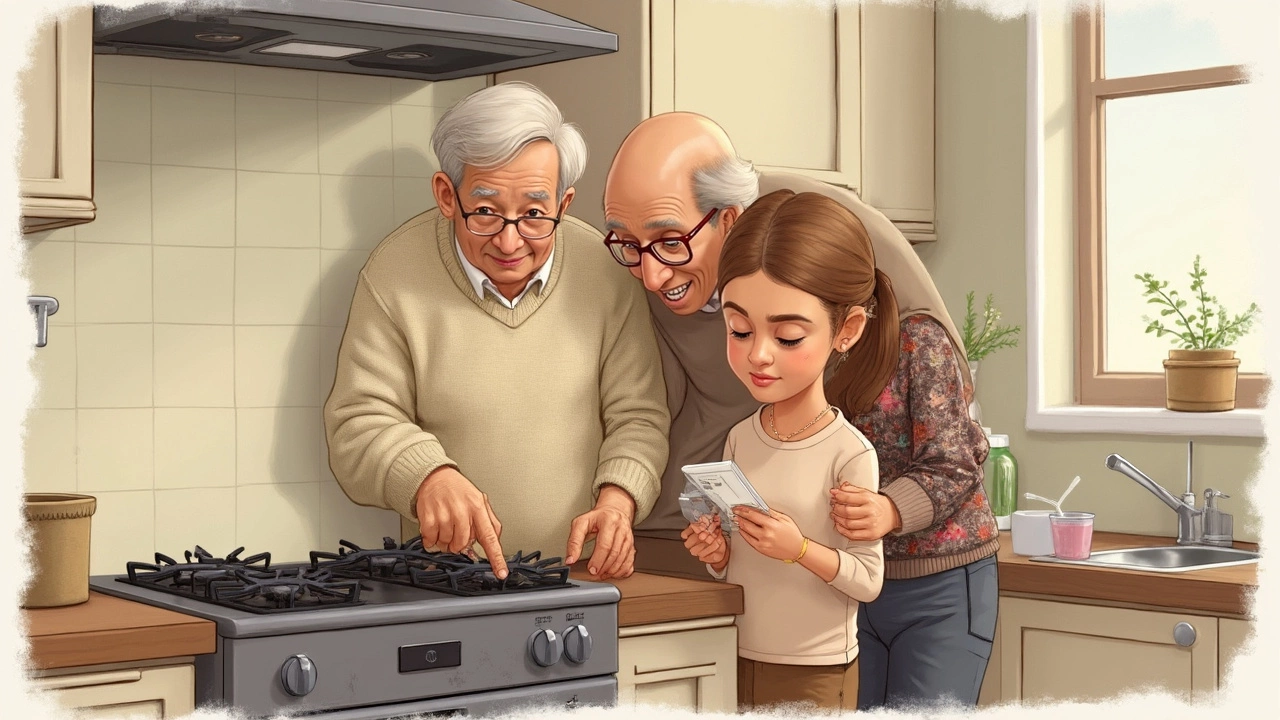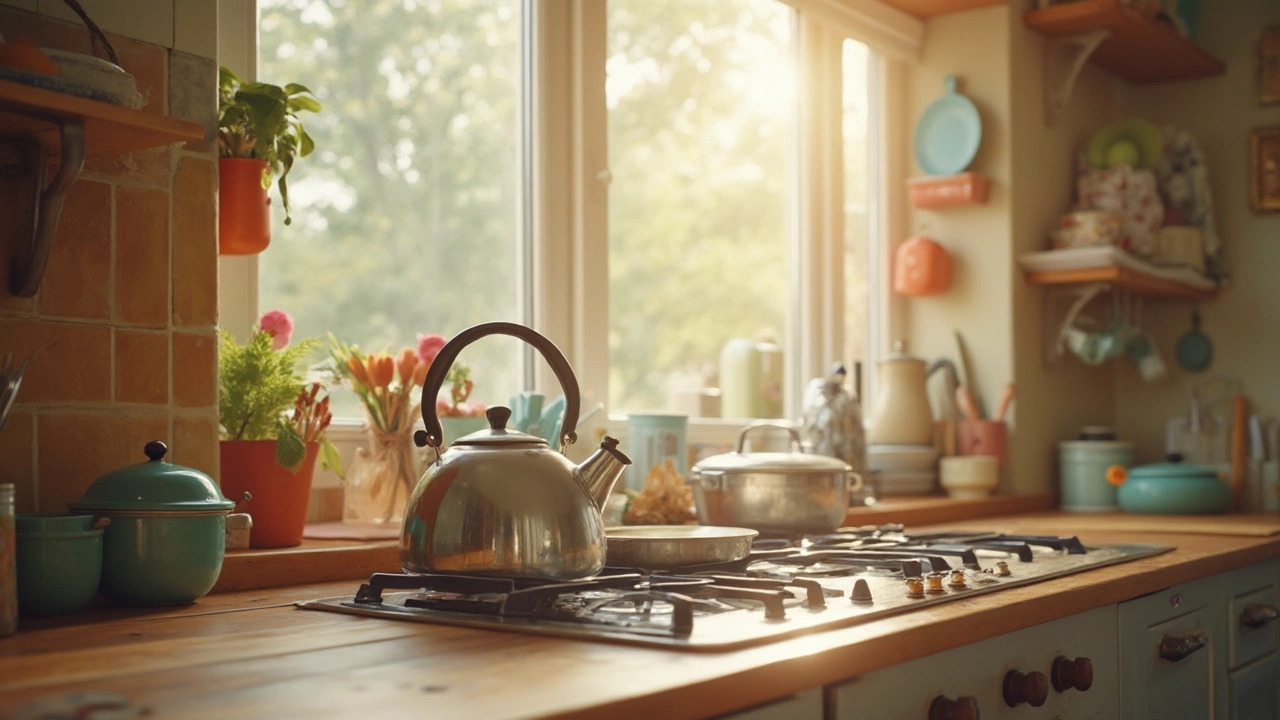Ever looked at your gas hob and wondered how many good years it’s got left? You’re not alone. A gas hob is one of those workhorses in the kitchen—used almost every day, but hardly gets any thanks until there’s trouble. If you're planning a kitchen revamp, budgeting for repairs, or just curious, knowing how long these things usually last is pretty handy.
Most folks don’t realize a gas hob isn’t something you just install and forget about for a lifetime. In real homes, years of heavy pots, spills, and that quick scrub with the wrong cleaning product can all add up. The good news? There’s actually a window of years you can expect from your hob, and a few habits you can pick up to make it last even longer.
- Typical Lifespan of a Gas Hob
- Biggest Factors That Shorten or Extend a Hob’s Life
- Warning Signs Your Hob’s on the Way Out
- Tips to Stretch Out Your Hob’s Lifespan
Typical Lifespan of a Gas Hob
If you ask appliance repair pros or check manufacturer manuals, you’ll hear that a gas hob usually sticks around for about 10 to 15 years. That’s for an average household, using it most days of the week. Some high-end gas hobs might push closer to 20 years, but only if you treat them right and luck’s on your side.
Here’s a quick look at average lifespans from real-world data:
| Quality Level | Expected Lifespan |
|---|---|
| Basic models | 8-12 years |
| Mid-range | 12-15 years |
| Premium/Heavy-duty | 15-20 years |
How you use and look after your hob definitely matters. If you’re into regular deep-cleans, keep the burners unclogged, and avoid letting pots boil over every week, it’ll last longer. But if you’re more of a slap-dash chef, you might see your hob start to get flaky before it hits double digits.
It’s normal to need small repairs or to swap out burners and ignition switches as the years go on. Those are replaceable bits. But when the core safety parts go wonky, or you’ve had three or four components go in the past year, the clock on your gas hob is probably ticking down.
Biggest Factors That Shorten or Extend a Hob’s Life
Turns out, your gas hob’s lifespan isn’t just luck—it comes down to what you throw at it day in, day out. The way you use it, what you use on it, and even how often you give it a clean can make a huge difference. If you grew up thinking an appliance just breaks when it’s ready, you’re missing the bigger picture.
First off, cleaning practices are a game-changer. Scrubbing with harsh chemicals or using metal sponges? Quick way to scratch, corrode, or even jam your burners. On the flip side, letting spills harden also shortens your hob’s life, especially if food or grease gets into the parts where the flame comes out. Stick to a damp cloth, a little dish soap, and non-abrasive cleaners for the win.
Then there’s how you cook. Heavy pots dropped on the hob or constant over-boiling can cause cracks, chips, or damage to the burners and supports. Most hobs are built tough, but nothing is truly “drop-proof.”
Don’t ignore maintenance habits. Regularly checking the burners and gas connections for blockages or leaks means you’ll catch issues before they turn serious. The British Gas Service Team says,
“Hobs that get an annual inspection and a quick deep clean every few months last about 3-5 years longer than ones left alone.”
And let’s not forget installation quality. If your hob was slapped into place in a hurry, there’s a much higher risk of gas leaks and malfunctions. Always get a pro to install or service your gas hob.
Believe it or not, the brand and model matter, too. Some are just built to take more daily use than others. High-end brands offer stronger grates and more robust ignitions, which can add years to your hob’s life, but even budget models can last if treated right.
Here’s a quick table you can use to see what helps and what hurts when it comes to appliance lifespan:
| Factor | Shortens Life | Extends Life |
|---|---|---|
| Cleaning | Harsh chemicals, metal pads, ignoring spills | Mild soap, soft sponges, regular wipe-down |
| Cooking Habits | Dropped pans, overflows, overloading | Careful placement, swift clean-ups |
| Maintenance | Skipping inspections | Annual service, checking for leaks |
| Installation | DIY jobs, loose fittings | Professional fitted, safe connections |
If you’re hoping to squeeze the most years possible out of your gas hob, a little TLC goes a long way. It’s not rocket science—good habits keep your appliance in the game, bad ones push it off the bench early.

Warning Signs Your Hob’s on the Way Out
Your gas hob starts telling you it’s in trouble long before it actually quits. If you notice any of these red flags, don’t just ignore them. Left alone, they get worse, and you might end up with an expensive repair bill—or a mad rush to replace everything before dinner guests show up.
- Weak or Uneven Flame: If the burner’s flame is yellow instead of blue, or if it flickers and won’t stay steady, something’s up. A healthy gas hob flame should always be solid and blue—that’s your sign the mix of gas and air is right. Yellow flames usually mean partial blockage, worn-out parts, or gas flow issues.
- Ignition Trouble: Are you hearing only clicking when you turn the dials and getting nothing else? Or do you need several tries to get a flame? Bad igniters or faulty wiring are often to blame. If you use a match more than the auto-ignition, it’s time to look closer.
- Unusual Smells: Smelling gas even when the hob is off? Time to call in a pro. Gas smells can point to leaks, which are always dangerous however small.
- Visible Rust or Cracks: Burner caps, pan supports, and the surface can all start rusting or cracking after years of use—especially if spills aren’t cleaned up quickly. Physical damage like this weakens performance and can get hazardous.
- Persistent Clicking: If your hob keeps making a clicking noise even after the burner is lit, moisture might have gotten into the ignition system… or the switches are starting to fail.
- Control Knobs Getting Stiff: Hard-to-turn knobs or dials that feel loose can signal wear inside the control valve, which affects how well your gas hob works—and can lead to leaks or full control failure.
It’s pretty common for old hobs (sometimes after 10 years) to develop two or more of these issues at once. Here’s a quick look to help you spot what’s normal and what’s not:
| Warning Sign | What It Means | Safe to Use? |
|---|---|---|
| Yellow Flame | Improper combustion, possible blockage | Not recommended |
| Gas Smell | Possible leak | No—switch off supply, ventilate, call a pro |
| Clicking After Ignition | Moisture or failed switches | Needs service |
| Rust/Cracks | Wear and tear | Check condition—minor rust is ok, major damage isn’t |
Keep these points in mind to avoid getting caught out by a surprise breakdown. If these warning signs sound familiar, it might be cheaper—and safer—to look into a repair or even a new gas hob soon.
Tips to Stretch Out Your Hob’s Lifespan
If you want to get the most years out of your gas hob, a few simple habits can make a huge difference. Most breakdowns aren’t some wild fluke—they come from everyday stuff like spills, skipping clean-ups, and ignoring little problems until they turn big.
- Clean up spills ASAP. Anything that drips or boils over around the burners can block gas flow or make parts rust. Just a quick wipe when things are cool protects key parts.
- Use the right cleaning products. Bleach and heavy-duty sprays can damage surfaces, markings, or rubber seals. Always reach for mild soap and warm water. A soft brush gets at those awkward burner holes.
- Don’t slam your pans down. Sudden blows can crack glass tops or bend burner caps. It sounds obvious, but treated carefully, the metal bits stay sturdy for years.
- Check your burners now and then. If flames look weak, orange, or uneven, it’s time to clean the burner heads or check for clogs. This small step stops dirt buildup from damaging parts long-term.
- Get yearly gas checks. A certified engineer will spot leaks, loose connections, or signs of wear you might miss. This also keeps things safe, since a faulty hob is a bigger problem than just needing a repair.
Wanna know how long folks usually keep their gas hob running? There was a UK consumer report in 2023 showing the average lifespan can jump from 8 to almost 15 years just by keeping it clean and checking it once a year.
| Simple Habit | Impact on Lifespan |
|---|---|
| Regular cleaning | Adds 2-3 years on average |
| Avoiding harsh chemicals | Prevents surface damage |
| Yearly inspection | Catches problems early, adds up to 4 years |
None of this takes loads of time. A few minutes here and there and the right approach will keep your hob cooking for years without the drama of a mid-dinner breakdown.


